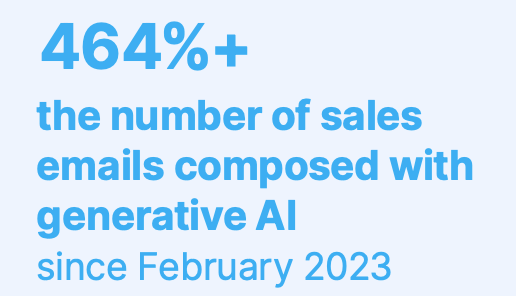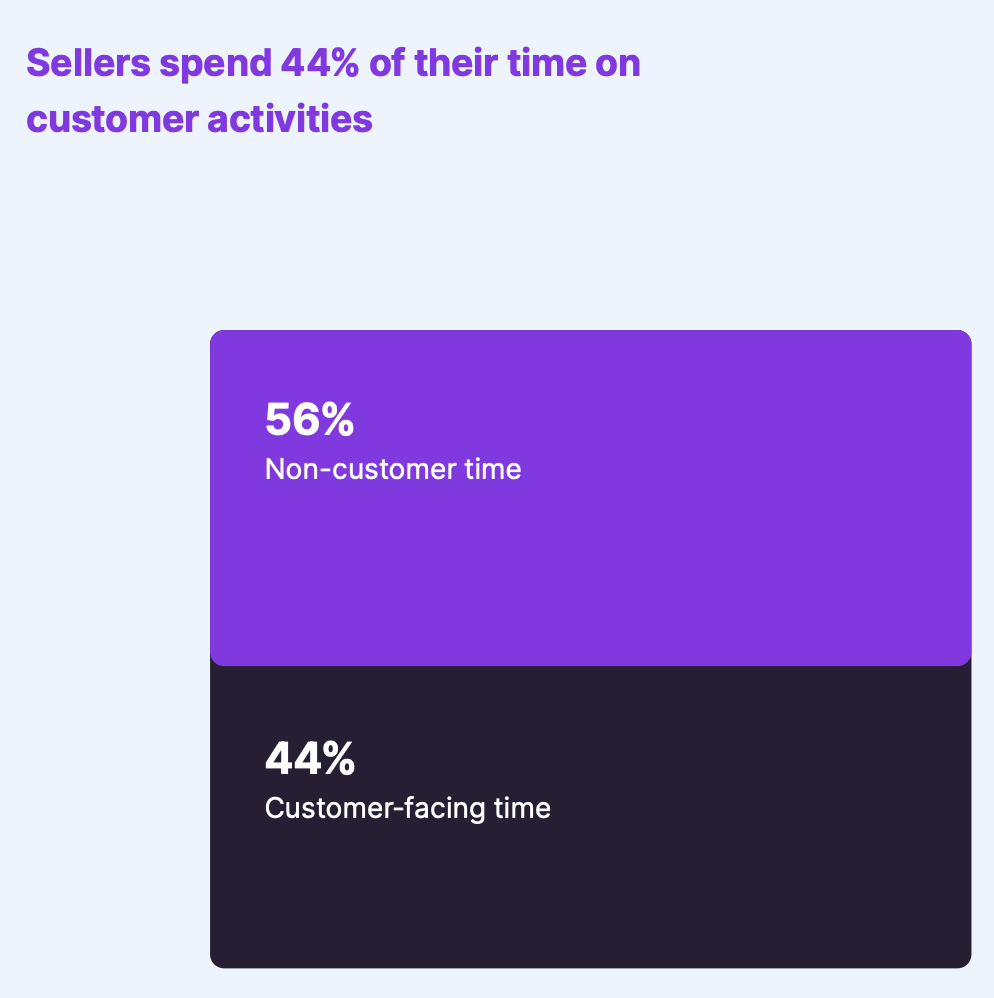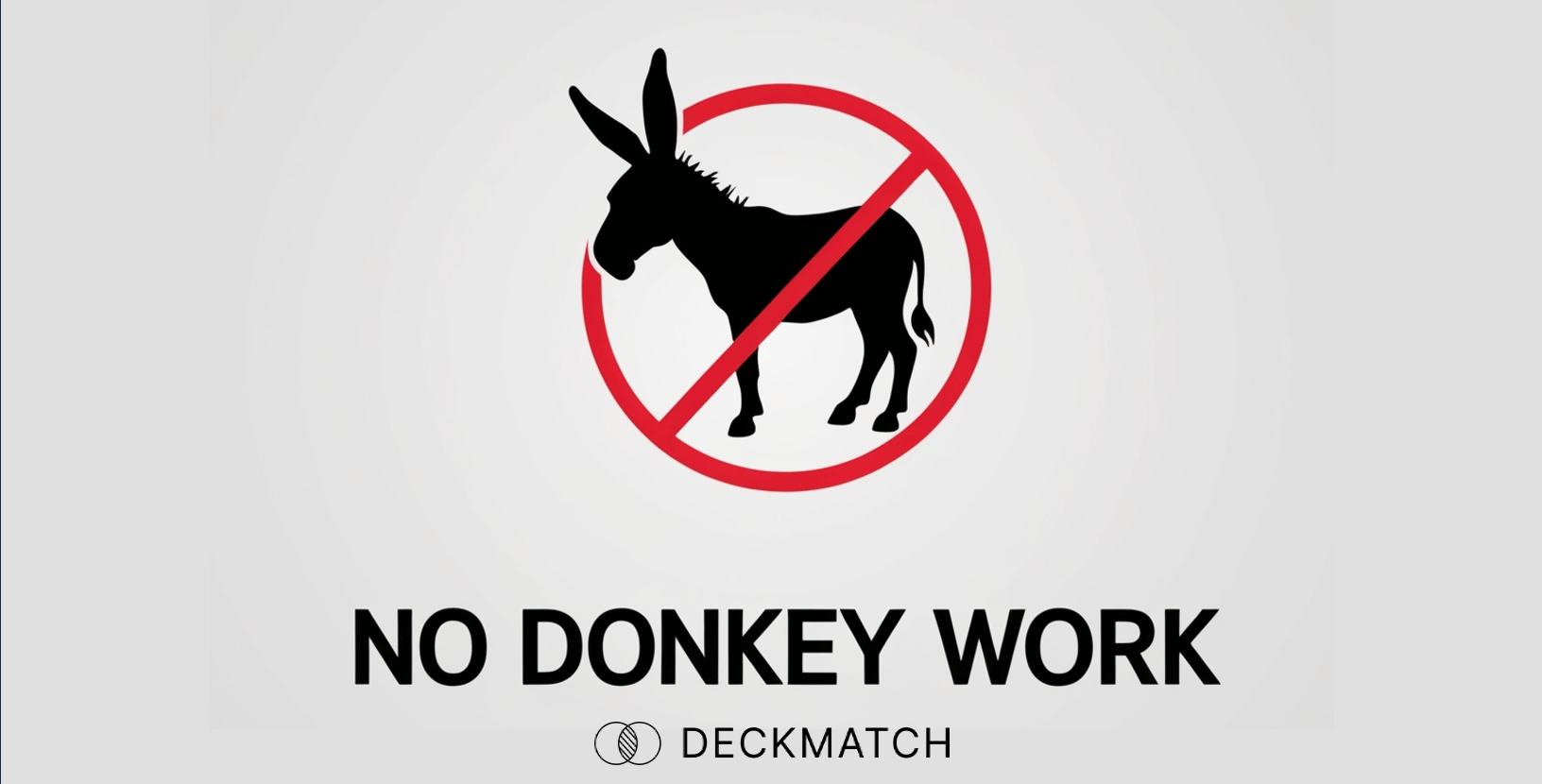👋 Hi, I’m Andre and welcome to my newsletter Data-Driven VC which is all about becoming a better investor with Data & AI. Join 32,650 thought leaders from VCs like a16z, Accel, Index, Sequoia, and more to understand how startup investing becomes more data-driven, why it matters, and what it means for you.
Brought to you by Deckmatch - Agentic Workflows and APIs for Data-Driven VCs
Connect your top-of-funnel to Deckmatch and transform pitch decks and URLs into structured and insightful data. Get detailed firmographic and people data, in-depth competitive and market analysis, and personalized investment memos without lifting a finger. The cherry on the cake? It's all seamlessly synced to your preferred tools like Affinity through our API integrations.
Never miss a deal, ditch the donkey work, and build meaningful relationships faster.
Who Reads AI-Generated E-Mails Anyway?
You know the AI-generated slop that lands in your inbox that makes you wonder if AI-driven GTM motions can truly work. Surely, you have developed some internal “ChatGPT Detector” that triggers when reading one too many “delves” or “underscores”. So does AI-driven GTM make any sense or is it mainly hype?

According to Gong (2024), the number of AI-generated Email has exploded since the advent of LLMs.
In this episode, we are examining AI-driven GTM strategies with a focus on B2B startups (with a few B2C insights clearly marked). We distinguish between early-stage startups (pre-seed to Series A) and later-stage startups, drawing on data-driven insights, industry benchmarks, and case studies.
This episode will be a little lighter than usual on scientific literature as the research still has to catch up. Also, note that some sources are companies that sell a variety of AI-driven GTM products but they still deliver aggregated data that is valuable to understand the dynamics of the situation.
The Hype vs. Reality Showdown
AI’s potential in sales and marketing has been hyped for years. For example, some bold predictions claim that by 2025 AI bots could handle up to 95% of customer interactions (Leadspicker, 2025). In reality, the human touch remains crucial for complex B2B deals, and AI is best at automating routine, top-of-funnel tasks while augmenting (not replacing) human teams.
Adoption data shows significant uptake but not ubiquity: In a late 2024 survey of 600+ revenue leaders, 48% of teams were using AI, 24% planned to within a year, and 27% had no plans (Gong, 2024). Clearly, AI is mainstreaming, but not every startup is on board yet.
Hype: “AI will replace salespeople.”
Reality: AI is helping teams work smarter, not eliminating them. But it’s not that simple. Some companies using AI in sales actually plan to hire more aggressively than those that don’t, while others have reported doing the opposite (Poyar, 2024). According to Gong, 15% of organizations surveyed expected to reduce sales headcount at all. As Gong’s CRO puts it, “AI is not replacing sellers… it’s helping them grow more efficiently”, by automating drudgery (data entry, call notes) and surfacing insights (Gong, 2024). Traditional sales skills like emotional intelligence and relationship-building likely remain critical. AI hasn’t changed the fundamental importance of human connection in B2B sales.
Hype: “Fully automated outbound: Fire and Forget”
Reality: Automated outbound can work, but requires careful execution and is not a silver bullet. Recent benchmarks found that 18% of software companies are testing AI-driven or automated outbound, but only 4% rank it among their top 3 pipeline sources (Poyar, 2024). This suggests that while AI can increase outreach volume, it hasn’t yet replaced core channels for reliable pipeline generation. High-volume, generic email blasts (even if AI-written) are increasingly ineffective. Spam filters and prospect fatigue make sure of that. Instead, the winning formula is using AI to achieve higher-quality personalization at scale, not just more noise.

Ideally, AI helps reps spend more time with customers (Gong, 2024)
Hype: “Chatbots will handle everything.”
Reality: AI chatbots have greatly improved and can handle a large share of routine queries, but they are not an SDR replacement. Some next-gen chatbots can now resolve ~70% of customer conversations start-to-finish autonomously and answer up to 79% of common questions, far beyond the simplistic bots of a few years ago. However, 46% of customers still prefer a human agent even if a bot is faster, mainly because bots still struggle with complex or highly personalized questions. A bad chatbot experience can backfire! 65% of people say they would leave a business after a negative bot interaction (Connel, 2025). The real story in 2025 is augmentation: AI handles FAQs and initial triage 24/7 (improving response time and capturing more leads), then hands off to human reps for nuanced needs.

How reps are currently using AI tools in practice, according to Gong’s 2024 survey of 257 global revenue professionals (2024)
B2C Insight: Consumer-facing companies have likewise tempered early chatbot hype with realism. While chatbots are now widespread (~67% of consumers used a chatbot last year), the biggest perceived downside is their inability to handle complex/personal queries. Notably, 50% of consumers would still choose a live agent over a bot for support, even if the bot is quicker (Connel, 2025). In B2C settings, AI succeeds when it enhances convenience (instant answers, 24/7 service) without forsaking the option of human help.
✈️ KEY INSIGHTS
AI adoption is growing, with 48% of revenue leaders using it and 24% planning to do so within a year, yet the technology remains best suited for automating routine tasks and supporting (rather than replacing) human teams. Chatbots and automated outbound are on the rise, though they are not fully supplanting personal interaction, with only 4% ranking AI-driven outbound among top pipeline sources and 46% of customers still preferring a human agent even if a bot is faster.

